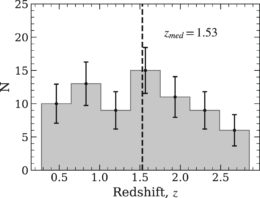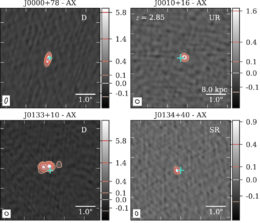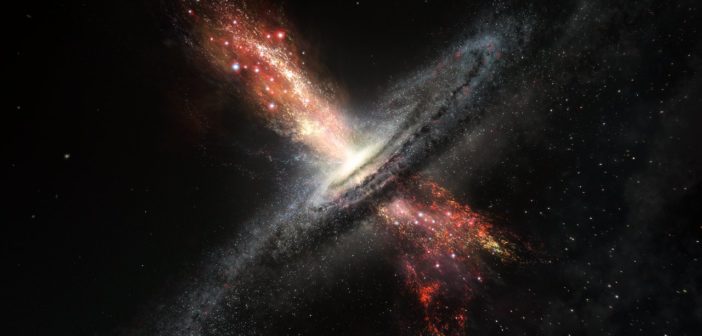Looking for a fireworks show this 4th of July? Try checking out the distant universe, where powerful jets flung from supermassive black holes slam into their surroundings, lighting up the sky. Though these jets are hidden behind shrouds of gas and dust, a new study has now revealed some of these young powerhouses.
A Galaxy–Black-Hole Connection

This composite image of Centaurus A shows an example of large-scale jets launched from an AGN, which can eventually extend far beyond the galaxy, as seen here. [ESO/WFI (Optical); MPIfR/ESO/APEX/A.Weiss et al. (Submillimetre); NASA/CXC/CfA/R.Kraft et al. (X-ray)]
The growth of a supermassive black hole is thought to be closely tied to the evolution of its host galaxy, and feedback like these jets may provide that link. As the jets collide with the gas and dust surrounding the galaxy’s nucleus, they can trigger a range of effects — from shock waves that drive star formation, to gas removal that quenches star formation.
To better understand the connections between supermassive black holes and their host galaxies, we’d especially like to observe AGN at a time known as Cosmic Noon. This period occurred around 10 billion years ago and marks a time when star formation and supermassive black hole growth was at its strongest.
The Hidden World of Cosmic Noon
But there’s a catch: around Cosmic Noon, galaxies were heavily shrouded in thick gas and dust. This obscuring material makes it difficult for us to observe these systems in short wavelengths like optical and X-ray. Instead, we have to get creative by searching for our targets at other wavelengths.

The redshift distribution of the authors’ sample, based on spectroscopic redshifts of 71 sources. The sources span the period of peak star formation and black hole fueling around Cosmic Noon. [Patil et al. 2020]
A team of scientists led by Pallavi Patil (University of Virginia and the National Radio Astronomy Observatory) has now gone on the hunt for these hidden sources at Cosmic Noon.
Newly-Triggered Jets Caught in the Act
Patil and collaborators observed a sample of 155 infrared-selected sources, following up with high-resolution imaging from the Jansky Very Large Array to identify compact radio sources. From their observations and modeling of the jets, the authors estimate these sources’ properties.

The JVLA 10 GHz radio continuum observations for four sources in the authors’ sample. The cyan plus symbol marks the infrared-obtained source position. The color bars indicate flux in mJy/beam. [Adapted from Patil et al. 2020]
What’s next? The authors are currently working on a companion study to further explore the shapes of the jets and their immediate environments. These young, hidden sources will provide valuable insight into how supermassive black holes evolve alongside their host galaxies.
Citation
“High-resolution VLA Imaging of Obscured Quasars: Young Radio Jets Caught in a Dense ISM,” Pallavi Patil et al 2020 ApJ 896 18. doi:10.3847/1538-4357/ab9011

4 Comments
Pingback: From AAS NOVA: “A Young Population of Hidden Jets” | sciencesprings
Pingback: Odkryto młodą populację ukrytych dżetów – PTMA Kraków
Pingback: Odkryto młodą populację ukrytych dżetów – Astronomia Śląska
Pingback: Daily Log (2020-07-05) | Study Astrophysics